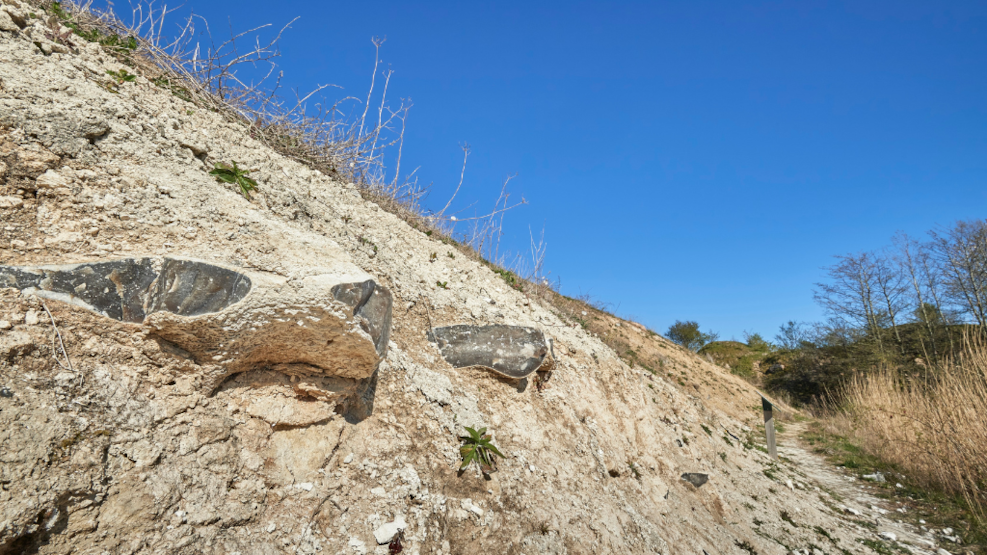
Klintholm Kalkgrave - limestone quarry
From the 1940s to the 1960s, limestone was mined at Klintholm. However, today it is a geologically fascinating area that shows the boundary between two geological periods.
Visit Klintholm Limestone Quarry
Klintholm Limestone Quarry is located along the Great Belt approximately midway between Nyborg and Svendborg. It is one out of a total of 13 abandoned quarries where limestone was mined for agricultural lime from 1935 to 1973. When you want to visit the quarry, you can park at the parking lot at Stenagergård and then follow the signs to the quarries along the coast.
What to experience at Klintholm Limestone Quarry
In addition to the limestone quarry being exciting because it provides insight into what happened 60 million years ago and has a rich wildlife, including a large population of European green toads. Trails have been made so you can walk around the area. From the quarry, you also have the opportunity to walk along the toad trail in both southern and northern directions.
Close to the quarry, you will also find Bøsøre First Camp, which has a lovely beach, but they also have a water park if the weather is not suitable for swimming at the beach.
If you want to stay overnight in the area, there is a shelter with a campfire site by the coast.
Geological perspectives at Klintholm Limestone Quarry
At the edge of one of the water-filled limestone quarries, a 50-meter-long and five-meter-high geological profile has been exposed, showing several million-year-old limestone and marl layers covered by deposits from the last ice age.
Visitors are encouraged not to damage the geological profile by climbing, digging, and hammering. Fossils can be collected in the nearby limestone piles on the grassy area above the profile.
At the bottom, whitish limestone from the Danian period (66-61.6 million years ago) is seen. The limestone consists of remains of small colony-forming organisms, bryozoans (moss animals). They have crusty, stalked, or bushy calcareous skeletons and formed 3-5 meter high and 50-75 meter long reef-like banks. In the limestone, remains of bryozoans, starfish, sea urchins, corals, shark teeth, brachiopods (shellfish-like creatures), and crinoids (belonging to the same group of animals as sea urchins) can be found.
Dramatic changes occurred at the transition to the subsequent period, Selandian (61.6-59.2 million years ago). Volcanic activity with rising lava from cracks in the seabed created a land bridge between Greenland and Britain, closing off the supply of warm water from the Atlantic Ocean.
Klintholm Limestone Quarry is part of the South Funen Archipelago Geopark
In 2018, Svendborg, Faaborg-Midtfyn, Langeland, and Ærø decided to establish the South Funen Archipelago Geopark with the aim of being designated as a UNESCO Global Geopark. The purpose of the geopark is to create and preserve an area that accommodates both humans and nature.
A UNESCO Global Geopark should bring the geology, nature, and cultural history of an area into play and convey a message that humans are part of life on Earth. That we all depend on the Earth's resources, are affected by climate change, and are responsible for sustainable development.
The South Funen Archipelago Geopark tells the story of a dramatic sea-level rise in Southern Funen and the islands. A sea-level rise that shaped a very special nature, which for the last few 10,000 years has formed the basis for the area's existence and cultural identity. It is the story of how the landscape and archipelago continue to change and define how we as humans live today. And the South Funen Archipelago Geopark is primarily about understanding how, through sustainable development, we can continue to protect our special geological, biological, and cultural heritage.